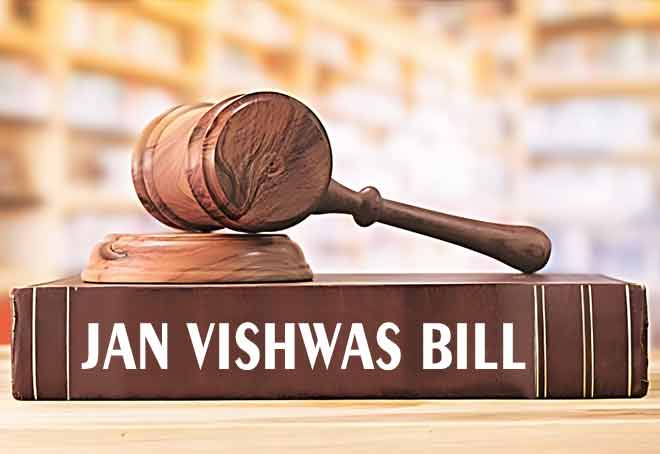Economic History of Indian : From Mauryas to Mughals
Explore the Economic history of India from Mauryan central planning to Mughal monetisation—vital for UPSC History and Economy preparation.

Introduction
The Economic History of India traces the evolution of India’s economic structures across major empires in ancient India. It highlights shifts from the Mauryan state’s centralised planning to the Mughal Empire’s monetised and revenue-centric economy. Key developments in land revenue systems, trade, agriculture, and labour policies reflect changing administrative and political priorities. This journey also shows how economic strength supported empire-building, urban growth, and cultural patronage. Understanding these transitions helps to gain valuable insights into governance, society, and economy, making it a crucial theme for UPSC preparation.
The economic landscape of ancient and medieval India, spanning from the Mauryan Empire (c. 322-185 BCE) to the decline of the Mughal Empire (c. 1526-1857 CE), presents a fascinating narrative of continuity and change. While the agrarian base remained the bedrock of the economy throughout this extensive period, the systems of revenue administration, the role of the state, the dynamics of trade, and the nature of the urban economy evolved significantly, shaped by the political ideologies and administrative innovations of successive empires.
Mauryan Empire (322 BCE – 185 BCE)
The Mauryan Economic System: Centralisation and State Control
The Mauryan period witnessed an unprecedented level of economic centralisation and state control, meticulously detailed in Kautilya’s Arthashastra. The economy was predominantly agrarian, with the state playing a proactive role in its management.
Key Features of the Mauryan Economy:
- Extensive State Intervention: The state owned vast tracts of agricultural land, forests, mines, and pastures. It also directly participated in and regulated various economic activities.
- Sophisticated Revenue System: Land revenue was the principal source of income. The tax, known as bhaga, was typically one-sixth of the produce, though it could vary. The state also levied taxes on trade, professions, and the use of natural resources. A well-organised bureaucracy, with officials like the Samaharta (chief collector of revenue) and the Sannidhata (treasurer), ensured efficient collection.
- Emphasis on Agriculture: The state encouraged the expansion of agriculture by providing irrigation facilities (the Sudarshana lake in Girnar being a prime example) and settling new lands. The Arthashastra mentions a variety of crops, including rice, wheat, and barley.
- Regulated Trade and Commerce: Trade, both internal and external, flourished under the political unity and security provided by the Mauryan Empire. The state-controlled prices, weights, and measures. Guilds of artisans and merchants (shrenis) were prominent in urban centres and played a crucial role in the organization of production and trade.
- Standardised Currency: The use of punch-marked coins, predominantly silver and copper, became widespread, facilitating commercial transactions.
Gupta Empire (c. 319 CE – c. 550 CE)
The Gupta Economic System: Feudal Beginnings and Agrarian Expansion
The Gupta period (c. 319-550 CE) is often termed the “Golden Age” of ancient India, and its economy reflected a high degree of prosperity. While building on the Mauryan legacy, the Gupta economic system also witnessed the emergence of new trends, particularly the beginnings of a feudal structure.
Key Economic Trends in the Gupta Period:
- Decentralisation and Land Grants: A significant development was the practice of granting land revenue and, in some cases, entire villages to priests (brahmadeya) and, later, to administrative and military officers. This gradually led to the emergence of a class of landed intermediaries and a more decentralised administrative and revenue system.
- Flourishing Agriculture: Agriculture remained the backbone of the economy. The Guptas continued the Mauryan emphasis on irrigation, and texts from this period provide detailed knowledge of agriculture, including the classification of land.
- Thriving Trade and Urban Centres: Both internal and external trade prospered. India had extensive trade links with the Roman Empire (in the early part of the period), Southeast Asia, and China. Major ports like Tamralipti and Bharuch were bustling centres of commerce. Guilds continued to be powerful institutions, often functioning as bankers as well.
- Coinage: The Guptas issued a large number of gold coins (dinaras), which are a testament to the prosperity of the period. However, the decline in the purity of gold coins in the later Gupta period suggests a growing economic strain.
Early Medieval Period (7th–12th Century)
Political Context:
- Disintegration of centralized empires led to emergence of regional kingdoms like Pratiharas, Palas, and Rashtrakutas.
Feudalism in India:
- Land Grants: Issued to Brahmins, officers, and temples, leading to formation of semi-autonomous feudal estates.
- Agriculture: Predominantly subsistence-based; yet innovations like canal irrigation and new rice varieties boosted productivity.
- Crafts and Guilds: Continued from earlier periods. Textiles, pottery, and metalwork were key.
- Currency: Declined due to scarcity of precious metals; barter gained importance.
- Trade:
- Inland: Restricted to regional markets.
- Overseas: Affected by fall of Roman and Sassanian Empires; revived later due to Arab demand.
- Economic Decentralisation: Decline in state control and rise of landed aristocracy.
Imperial Cholas (9th – 13th Century)
The Cholas were instrumental in building one of the most vibrant maritime economies in Indian history. Their empire extended across South India and parts of Southeast Asia.
Key Features:
- Agriculture: Extensive use of tank irrigation; temple institutions acted as landowners and administrators.
- Industrial Growth: Advanced metallurgy, textile (especially silk), and shipbuilding industries.
- Foreign Trade:
- Main ports: Nagapattinam, Kaveripattinam, and Mahabalipuram.
- Trade partners: Southeast Asia (Srivijaya), China (Song Dynasty), Middle East.
- Goods exported: Spices, textiles, ivory, pearls, camphor, and elephants.
- Imported goods: Arabian horses, luxury items.
- Merchant Guilds: Ainnurruvar, Manigramam, and Nanadesi were powerful trans-oceanic trade networks.
- Currency: Gold coins weighing ~5 grams circulated widely.
Administrative and Economic Integration:
- Local Autonomy: Village assemblies (Sabhas) collected and allocated taxes.
- Economic Infrastructure: Roads, ports, and rest-houses facilitated commerce.
Delhi Sultanate (1206 – 1526 BE)
The Delhi Sultanate: New Institutions and Agrarian Reforms
The establishment of the Delhi Sultanate (c. 1206-1526 CE) marked the advent of new administrative and economic institutions, though the fundamental agrarian nature of the economy persisted.
Economic Innovations of the Sultanate:
- The Iqta System: This was a unique land revenue assignment system where the kingdom was divided into tracts of land called iqtas, which were assigned to nobles and officers in lieu of salary. The holders of iqtas, known as iqtadars or muqtis, were responsible for collecting revenue and maintaining troops for the Sultan. This system was crucial for the consolidation of the Sultanate’s power and the management of its vast territories.
- Agrarian Reforms of Alauddin Khilji: Faced with the need to maintain a large standing army, Alauddin Khilji introduced radical economic reforms. He increased the land revenue to half of the produce in the Doab region, introduced a system of measurement of land for revenue assessment (masahat), and brought a large area of land under the direct control of the state (khalisa). He also instituted a strict price control mechanism in Delhi to keep the cost of living low for his soldiers.
- Urban Economy and Karkhanas: The Sultans were great patrons of urban life. A significant feature of the urban economy was the establishment of royal workshops, or karkhanas. These karkhanas produced goods for the royal household and the army, employing a large number of artisans.
- Trade and Currency: The sultans standardised the currency, with Iltutmish introducing the silver tanka and the copper jital. Trade, both internal and external, continued to be a vital part of the economy.
The Mughal Economic System: Consolidation and Commercialisation
The Mughal period witnessed a further consolidation of the economic systems of the preceding eras, leading to a period of remarkable economic prosperity. The political stability and a well-structured administrative machinery provided a conducive environment for economic growth.
Hallmarks of the Mughal Economy:
- Standardised Land Revenue System: Building on the experiments of Sher Shah Suri, Akbar, with the help of his finance minister Raja Todar Mal, established a highly efficient and standardised land revenue system known as the Zabti or Dahsala system. This system involved detailed measurement of land, classification of land based on fertility, and the fixation of revenue in cash based on the average produce and prices of the last ten years.
- Growth of Commercial Agriculture: The Mughal revenue system, which encouraged the payment of revenue in cash, led to a significant increase in the commercialisation of agriculture. The cultivation of cash crops like cotton, indigo, and sugarcane was encouraged.
- Vibrant Trade and Commerce: The Mughal era was a period of flourishing internal and international trade. A network of roads, sarais, and a uniform currency facilitated internal trade. India had a favourable balance of trade, exporting textiles, spices, and other goods to Europe, Asia, and Africa, and importing mainly precious metals.
- Role of Urban Centres and Craft Production: The Mughals were great builders, and their reign saw the growth of several new towns and the expansion of existing ones. These urban centres were hubs of craft production, with textiles being the most important industry. The system of karkhanas continued to thrive under the Mughals.
Continuity and Change
From the Mauryas to the Mughals, the Indian economy exhibited several continuities. The predominance of agriculture, the importance of land revenue as the primary source of state income, and the existence of a vibrant tradition of trade and craft production were constant features.
However, there were also significant changes. The highly centralised state control of the Mauryan economy gradually gave way to a more decentralised, feudalistic structure during the Gupta period. The Delhi Sultanate introduced new institutional frameworks like the Iqta system, and rulers like Alauddin Khilji undertook bold experiments in state intervention. The Mughals, in turn, refined and standardised the administrative and revenue systems, leading to a high degree of economic integration and commercialisation.
In conclusion, the economic history of India from the Mauryas to the Mughals is not a story of a static, unchanging system. It is a dynamic narrative of adaptation and innovation, where each successive empire built upon the legacy of its predecessors while introducing new elements that shaped the economic fabric of the subcontinent for centuries to come.
Subscribe to our Youtube Channel for more Valuable Content – TheStudyias
Download the App to Subscribe to our Courses – Thestudyias
The Source’s Authority and Ownership of the Article is Claimed By THE STUDY IAS BY MANIKANT SINGH


